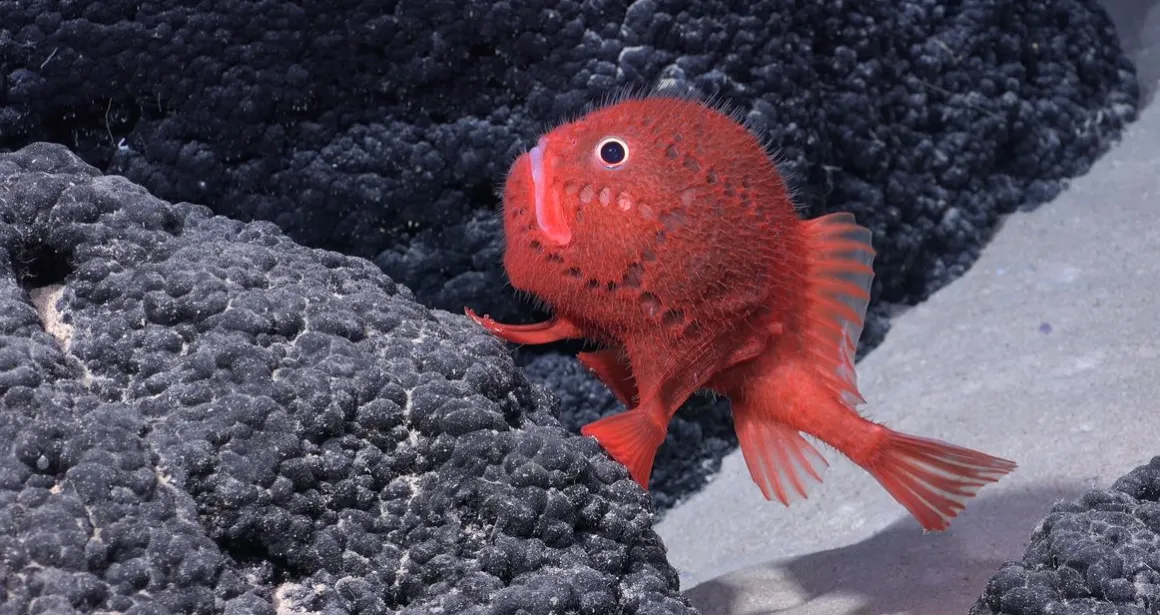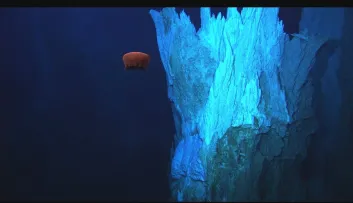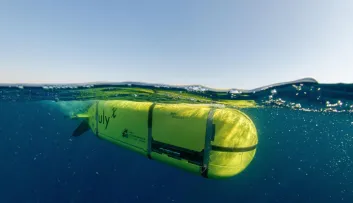Abyss Biodiversity 3mn
New species discovered in the seabed off the coast of Chile
An oceanographic campaign has led to the discovery of about 100 new species in the deep sea.

The deep seabed, which is still largely unexplored, is a constant source of innovation for scientists. Exploration campaigns routinely reveal the existence of new species.
For example, a few weeks ago, an oceanographic campaign led by the Schmidt Ocean Institute took its vessel, the Falkor (too), 2,500 km off the coast of Chile, focusing on the Juan Fernández and Nazca-Desventuradas marine parks in the south-east Pacific, where it discovered a host of new species, including a red frogfish.
An exploration down to depths of 4,500 metres
When the scientific team reached the ridges of Salas y Gómez and Nazca, two undersea mountain ranges stretching for 2,900 kilometres and comprising more than 200 seamounts, they used an ROV, an underwater robot capable of descending down to 4,500 metres, to explore and map 52,777 square kilometres of seabed.
This work led to the discovery of four seamounts in the Chilean waters. The highest mountain explored and mapped for the first time was 3,530 m high.
Corals, sponges and sea urchins, an abundance of life
During the campaign, the scientists identified deep-sea corals, glass sponges, sea urchins, amphipods, spiny lobsters and other species that are probably new to science. The samples obtained will undergo physiological and genetic studies to check that they are indeed new species.
"This expedition has far exceeded our expectations. We always expect to find new species in these remote and little-explored areas, but the sheer quantity we have found, particularly for certain groups such as sponges, is staggering", said Javier Sellanes, the scientist leading the expedition. "These flourishing, healthy ecosystems show that the Nazca-Desventuradas and Juan Fernández marine parks provide effective protection for fragile marine habitats."
The Schmidt Ocean Institute's exploration missions are carried out in partnership with the Nippon Foundation's Nekton Ocean Census Program, which aims to identify new marine species. These campaigns also aim to collect data that may help underpin the designation of an international marine protected area on the high seas in the region.
The deep seabed, a fascinating and vulnerable world
So far, only 5% of the seabed has been accurately mapped, and scientists believe that the number of species that could exist in the depths, from plankton to the largest marine animals, could be as many as 10 million.
In fact, almost at the same time as the Schmidt Ocean Institute campaign, a scientific expedition from the Ocean Census project also discovered around a hundred new species at a depth of 4,800 metres, around the Bounty Trough, an 800-kilometre-long crevasse in the south-east of New Zealand.
These new species, just like all the other marine animals living in the deep sea, are particularly vulnerable. Scientists are warning that deep-sea mining would have dramatic consequences for ecosystems about which so much is still unknown.
Photo : Courtesy of the Schmidt Ocean Institute



